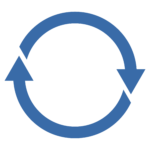A Framework for Building Customer Segmentation Models
Author: Yifei Zheng
If someone asked you to describe your customer base or audience, how would you do it? Would you describe a generalized persona? Perhaps a list of demographic features? Or maybe you would list several interests that align with your core mission or brand. While this might seem like an outline of who your customers are, it’s actually a description of who your customers are not. This is because any given audience is not a monolith. Inside of any group are subgroups of people with shared interests, experiences, and motivations that all factor into how they will engage with your business. This is where customer segmentation comes into play. Customer segmentation is a means of refining a set of customers into groups based on specific traits or characteristics they share.
Customer segmentation provides a way of organizing and managing a company’s relationship with its customers and makes things like personalized marketing communications more efficient. But, it can also help you improve customer service and support efforts, increase customer loyalty, help identify your most valuable customers, and identify new product or upsell opportunities. If you want to learn more about customer segmentation and its use cases, check out our previous blog post, where we compare segmentation and discrete choice models in the context of market research data.
To learn more about your customers and capitalize on this kind of data, you must know where to begin and what type of customer segmentation model would be most effective given your business and goals. This can be quite a challenging task given there are so many different kinds of segmentation models with various strengths and weaknesses. This is why following a generalized framework for building a customer segmentation model can be a great place to start. Keeping this framework in mind ensures that you’ll be able to cover the key considerations at each stage of the segmentation process, and the resulting segments are meaningful and actionable from a business perspective.

The first step in creating a customer segmentation model is establishing your key business goals or questions. Some questions that you should ask here are:
- What are the business outcomes we’re trying to achieve?
- Who are the stakeholders, i.e. the teams that will use the segmentation results?
- What would be considered actionable segment differences?

Then, based on your previously outlined business goals, determine the most relevant segmentation dimensions and gather the necessary data. This should be done by evaluating the relevancy and general quality of existing data sources and identifying what additional data needs to be collected. Some common data sources are internal, survey, and public or purchased third-party data, which should be quality checked thoroughly. For each potential data source, it’s important to consider the cost of actually collecting the data, both in terms of length of time and monetary cost. Depending on the scope and timeline of your particular segmentation project, the cost of collecting data may limit your ability to achieve certain business objectives, and your original goals will need to be modified accordingly.

After collecting the required data and ensuring it’s of good enough quality, the next step is to identify customer segments by running actual segmentation models and continuously comparing them against your business needs. This combination of technical and business perspectives will result in your optimal segments, which should be kept at a moderately low number, 3-8, to ensure they produce actionable insights. Some common segmentation models include K-Means Clustering, DBSCAN, Gaussian Mixture Model, Agglomerative Hierarchical Clustering, and Affinity Propagation. (Keep an eye out for our future blog post comparing different types of segmentation models)

Once you’ve found your optimal segments, you’ll need to profile each segment to better understand what these customers look like. For each segment you’ve identified, make sure you can answer the following questions:
- How many customers are in the segment?
- What are the most salient characteristics of customers within this segment?
- What’s the overall quality of customers in this segment (i.e. the business value they bring)?
After asking yourself these questions to ensure the segments are reasonable and distinguishable from each other, start thinking about how you can cater to the specific needs/preferences of customers in each segment. For example:
- What services/product characteristics do they consider as highly important?
- What are their most preferred channels of communication?
- What areas when interacting with your business are they experiencing the most frustration?
- What areas of your business do they value the most?

Finally, you will want to take your discoveries in the previous step to the various stakeholders for further discussion in order to develop and execute segment-specific strategies. This will be an iterative process involving the creation of a plan for evaluating the performance of your customized strategies and iterating on your segmentation model based on the results you gather to better drive your business goals. Some key considerations when implementing your segmentation model include:
- Scaling your model results to your entire customer base (plus additional incoming customers)
- Determining the criteria and cadence for retraining your model
- Setting up a process for monitoring model performance and drifts in the data or other data quality issues.
Customer segmentation is a valuable tool that, when used effectively, unlocks insights about your customers and generates significant business value. However, given the unsupervised nature of segmentation methods, it’s easy to get lost in the myriad of technical details when trying to build out a segmentation model. Following the major steps outlined in this article and asking yourself the key questions at each step along the way allows you to build customer segmentation models that are technically sound while also generating actionable insights that genuinely bring value to your business.
For a more hands on, consultative approach to building customer segmentation models, contact us today for a free consultation and take advantage of our vast amount of experience building customer segmentation models for clients across various industries.



